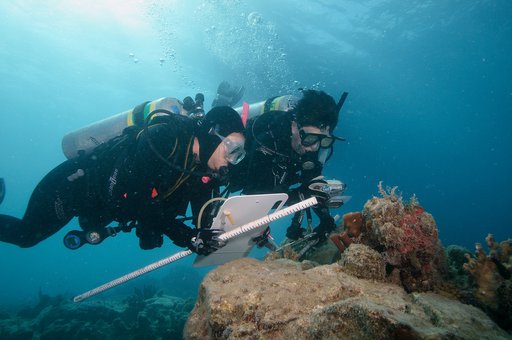Turks and Caicos Black Coral Healthy and Thriving
Easy to See Black Coral in the Turks and Caicos Islands
It’s a highly efficient Caribbean carnivore. It has dominated its environment for millennia. It thrives without heat or light.
Yet it’s on the endangered list.
The rare black coral is one of 60 species of coral living in the reefs off the Turks and Caicos Islands. The “black” in its name refers to the actual colour of its hard skeleton, and first time divers are often confused by the fact that the tissue around the skeleton bears little polyps which can be a variety of colours: white, yellow, red, green and brown.
Said Steve Weinman in DIVER, “The black coral I saw recently at the site called Black Forest off the island of Grand Turk was green, though under a dive light, it looks red!”
What Makes Black Coral So Unique?
However, it’s not just its multitude of colours which makes it unique among corals. For starters, unlike many species of coral, it doesn’t have a symbiotic relationship with algae. It doesn’t need the algae, light, or warmth to survive and so it can and does live in deeper waters. It’s a highly effective filter feeder which thrives in areas where there are strong currents to bring along the small creatures known as plankton on which it preys. Another reason it is predisposed to the deeper, darker waters is the fact that its larvae are very sensitive to light.
Over time, the Turks and Caicos black coral grows into tree-like forms with trunks and branches. Its structure is home to a variety of other marine life like sponges, molluscs, and barnacles. Not only that, it serves as protective shelter for all kinds of fish. Hence, it is vital to the general health of the ocean.
Unfortunately, in many parts of the world, the Black Coral is starting to disappear as it is highly prized among commercial divers. It’s known for its lustrous shine and the branches are cut, ground and polished and made into fine jewellery. Once removed from a reef it can take a very long time for new growth to replace it as it grows incredibly slowly, about 8 to 22 micrometers per year. How small is that ? Well, an average human hair is about 80 micrometres thick and it would take the Black Coral 4 to 10 years to reach even that miniscule amount. A seemingly insignificant branch the length of your finger could literally take a thousand years to replace.
Black coral is tough and has lived an extremely long time on this planet reflecting its scientific name “antipatharia” which means “against suffering”. Scientists recently discovered specimens in the Gulf of Mexico which they assessed were an astounding 2000 years old! But its slow growth rate, as well as the commercial harvesting and the invasion of other species all pose threats to the future of the black coral. In 1981 international trade in black coral was finally regulated by the Convention on International Trade in Endangered Species of Wild Fauna and Flora.
Black Coral Dive Sites in Turks and Caicos
Fortunately, the reefs around the Turks and Caicos Islands are home to a healthy population of these rare survivors and divers can see shallow water varieties of black coral in dive sites like The Cathedral located slightly northwest of Villa Del Mar. It’s a 10-15 minute boat ride from nearby operations like Flamingo Divers or Dive Bay Provo. If you take the ferry to Grand Turk, the Black Forest diving site is another ideal spot. Here, on about an 80 foot wall, the black coral is protected by an overhang and able to grow as if in much deeper water.
The black coral is a deep water gem in the Turks and Caicos Islands to be cherished and preserved for future generations. It is vital to the eco system of the area and serves as a link to the past.
Learn More about Black Coral
tcmuseum.org
news.discovery.com
oceanexplorer.noaa.gov
www.fws.gov
www.susanscott.net
www.aquaticcommunity.com
www.scubadviser.com
www.livescience.com


